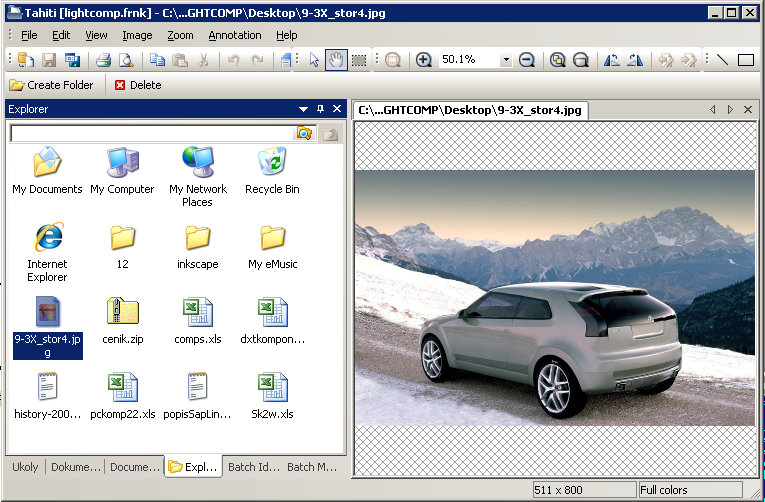Table of Contents
There is description of several components distributed together with the Tahiti. Components are used to extend Tahiti with new functionality. It can be only small utility or bigger extensions like Explorer integration.
Explorer is domain specific component. It can be constructed using
contract-id: @lightcomp.com/tahiti/shell-files;1. It is
visible in the list of domain as
Component.ShellFiles.
Components display embedded Explorer in the one window. It is
possible drag&drop files from the explorer to other Tahiti windows
or to drop files to the Explorer. There is only one option called
Component.ShellFiles.Directory. This option allow
to specify default directory when Tahiti is started.

Embedded Explorer has one dialog-bar. This bar can be positioned some way as other bars.
Update component allows to check if there is new version of the
application and start update process. Component internally use
internally Invoker to do update. It means Invoker have to be first
correctly installed and configured. There are two options in the
Tahiti.xml which have to be set correctly.
At the first component have to be enabled - have to be listed in
the option SharedComponents.XPCOM.Load.
Example 8.1. Update - SharedComponents.XPCOM.Load
<Item name="SharedComponents.XPCOM.Load" type="string"
default="
@lightcomp.com/tahiti/update;1
">
<Description value="Shared XPCOM components."/>
</Item>
The second option is called
Component.Update.InvokerFile and is also placed
in the Tahiti.xml. It contains name of
configuration file for the Invoker. Tahiti is using this file same way
as Invoker.exe. This file is typically called
tahiti-update.xml.
Component also allows to start update process from the server. It can be done by sending Action Object (.taobj) to the Tahiti. Such object can start check if there is new version. Action object can also contain several options which can force Tahiti to use different XML file for the check. Description of the Action Object and attributes is part of the DEP2 Specification.